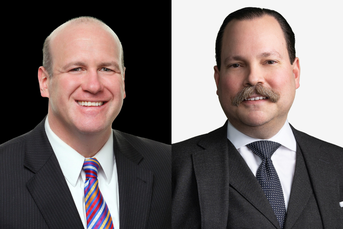If Obama holds firm, here’s what the DOL fiduciary rule will end up looking like

Expect language that would brighten the line between education and advice, and expand the list of permissible assets for retirement plans, to name a few.
After four days of hearings at the Labor Department, the fate of a proposal to raise investment advice standards for retirement accounts will be determined by one thing: the strength of President Barack Obama’s political backbone.
If Mr. Obama holds firm in support of the fiduciary rule, designed to curb conflicts of interest for brokers working with 401(k) and individual retirement accounts, then it will be finalized next spring with modest changes.
Where does this week’s hearings — in which the DOL heard the usual arguments from dozens of proponents and opponents — leave us?
Watching the White House.
The bottom line is that the DOL is an executive agency that operates at the will of Mr. Obama. He has said that protecting investors from inappropriate, high-fee investments in their retirement portfolios is a key part of his “middle-class economics” initiative.
So if the government sees this priority through, then what will a final fiduciary rule look like?
The most supportive letter for the rule among three missives sent by Democratic senators over the past week asking for changes was from Sen. Ron Wyden, D-Ore., and seven of his colleagues on the Senate Finance Committee. It is the one that most likely provides a road-map for adjustments that the DOL will make to the rule. Look for changes that would brighten the line between education and advice, and for changes in language that make the rule more welcoming toward annuities.
In her opening comments at the hearings, Phyllis Borzi, DOL assistant secretary and the intellectual and bureaucratic force behind the rule, indicated that the agency is considering modifying the best-interests contract required for brokers to charge commissions by adjusting its timing and simplifying the related disclosures. It likely will clarify how the rule applies to rollovers, expand the list of permissible assets for retirement plans and lengthen the implementation period, among other changes.
If the DOL wants to put its reforms on the books and into effect before Mr. Obama leaves office, then it will have to issue a final rule by next spring, perhaps by April. That would leave enough time for the eight-month implementation period, assuming it isn’t lengthened, before the end of the year.
At that point, it would be much more difficult for a Republican administration, if one is elected in 2016, to undo things.
“DOL will finalize a rule, unless they’re stopped from finalizing a rule,” said Barbara Roper, director of investor protection at the Consumer Federation of America.
The most dangerous shark in the water for DOL’s effort is language in appropriations bills called riders that would prevent the DOL from funding the implementation of the rule.
Once again this year, however, Congress does not look as if it will be able to come to a budget agreement. That means that by Oct. 1, the start of the new fiscal year, lawmakers will have to pass a continuing resolution that keeps the government open.
When 12 appropriations bills, containing hundreds of riders, are boiled down to one omnibus, the riders tend to fall by the wayside.
“Legislative dysfunction is our friend,” Ms. Roper said. “I’m cautiously optimistic.”
If the rule is finalized, another threat is an inevitable lawsuit. Some comment letters that the DOL received by its July 21 deadline were written as if they were a game plan for legal action, outlining ways DOL has exceeded its authority with the rule.
And during the hearings, the financial industry strongly reiterated its objections, asserting that the rule is unwieldy and would significantly increase liability risk and regulatory costs for brokers, and make advice more expensive for investors.
But don’t sit on the edge of your chair waiting for an overhaul of the rule. The DOL won’t come close to a re-proposal. The hearings have demonstrated that the agency believes its rule codifies a simple goal — ensuring financial advisers act in their clients’ best interests — in a straightforward way.
“It really isn’t that long and complex,” said DOL deputy assistant secretary Timothy Hauser.
But it will remain controversial.
Learn more about reprints and licensing for this article.








